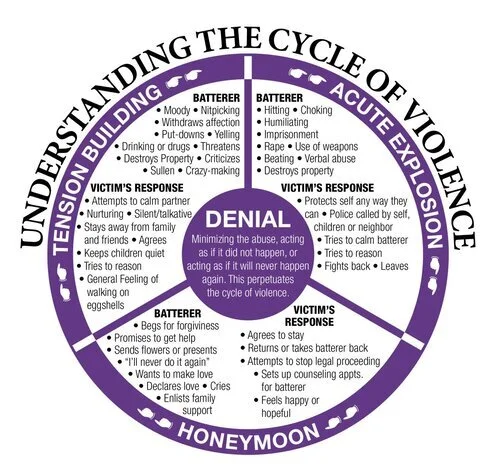Domestic violence (abuse), is a pattern of violent and coercive behaviors, including physical, sexual, verbal and psychological attacks used to gain and maintain power and control over another person.
While domestic violence is highly prevalent in romantic relationships, it is not restricted to these relationships alone. Domestic violence occurs when there is violence between intimate partners, household members (such as roommates), and family members.
Domestic violence is not restricted to any gender, race or class. It occurs within every class, race, gender, and culture. It also affects all ages.
Intimate partner violence (IPV) is abuse or aggression that occurs in a romantic relationship. “Intimate partner” refers to both current and former spouses and dating partners. IPV can include any of the following types of behavior:
Physical violence is when a person hurts or tries to hurt a partner by hitting, kicking, or using another type of physical force.
Sexual violence is forcing or attempting to force a partner to take part in a sex act, sexual touching, or a non-physical sexual event (e.g., sexting) when the partner does not or cannot consent.
Stalking is a pattern of repeated, unwanted attention and contact by a partner that causes fear or concern for one’s own safety or the safety of someone close to the victim.
Psychological aggression is the use of verbal and non-verbal communication with the intent to intimidate or harm another person mentally or emotionally and/or to exert control over another person.
When IPV occurs in adolescence, it is called teen dating violence (TDV). TDV affects millions of U.S. teens each year. About 11 million women and 5 million men who reported experiencing contact sexual violence, physical violence, or stalking by an intimate partner in their lifetime said that they first experienced these forms of violence before the age of 18.
Many people believe it should be an easy process to leave an abusive situation. This false belief causes many victims to feel ashamed, afraid to ask for help and as if they don’t deserve any better than their current situation. This drastically reduces the support network for them.
You deserve to live a life free from fear and full of happiness. It is not your fault.
The truth is, leaving an abusive situation can be incredibly difficult and can be very dangerous. We are here to help you do it safely and get back on your feet.
Abusive behaviors do not always readily present themselves during the onset of a relationship. It can be a gradual process where a person is making what they find to be mostly reasonable compromises until one day they suddenly realize they have been the only one participating.
Abuse also occurs in a cycle (see right image). This cycle could play out over years, months, weeks, days, and even hours. This roller coaster of emotions can make it incredibly hard for victims to identify what is happening and how they should respond. Often they will reach out for relationship advice because they know something is wrong, but they aren’t sure it is abuse. Unfortunately, applying tactics that are intended for unhealthy relationships to an abusive relationship can actually make the abuse worse.




